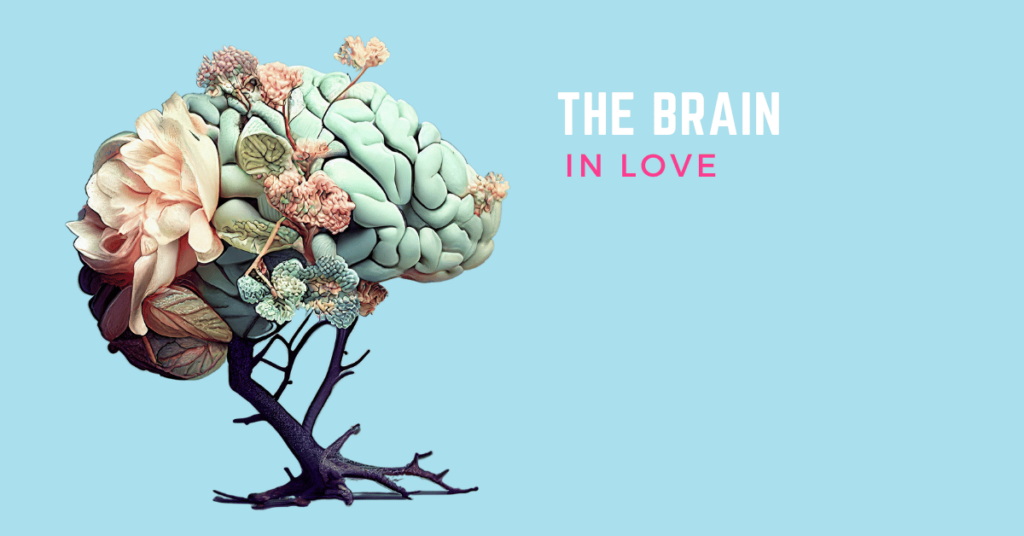Have you ever found yourself wondering why the initial spark and intense attraction you felt for your partner seem to fade over time? The world of love and relationships is a complex web of emotions, and much of what we experience can be attributed to the fascinating realm of brain chemistry. In this blog post, we will embark on a journey through the neurochemistry of love, from the exhilarating stages of desire to the profound depths of love and attachment.
Desire: The Chemistry of Passion
Desire is the fiery beginning of the love journey, where sparks ignite, and the brain’s chemistry takes hold. It’s the intoxicating feeling of being drawn to someone, the rush of emotions, and the longing to be close to them. At the heart of desire lies a captivating concoction of neurotransmitters, each playing a unique role in this passionate dance.
Dopamine: The Star of Attraction
- Dopamine, often referred to as the “feel-good” neurotransmitter, takes center stage during the initial stages of attraction. It’s responsible for the intense pleasure and euphoria you feel when you’re with someone you desire.
- This surge of dopamine creates a reward system in the brain, reinforcing your desire to be with that person.
Norepinephrine: The Hormone of Excitement
- Norepinephrine is another key player in desire, responsible for the heightened state of alertness and excitement.
- It’s what causes your heart to race, palms to sweat, and butterflies to flutter in your stomach when you’re near the object of your affection.
Serotonin: The Mood Regulator
- Serotonin, a neurotransmitter linked to mood regulation, plays a role in the intensity of desire.
- In the early stages of attraction, serotonin levels may decrease, contributing to the obsessive thoughts and focus on the person you desire.
Love: Oxytocin’s Embrace
As the journey progresses, desire often evolves into love—a deeper, more profound emotional connection. Love, at its core, is a neurochemical masterpiece, guided by the hormone oxytocin. This remarkable molecule, often called the “love hormone” or “cuddle hormone,” plays a central role in forming and strengthening emotional bonds.
Oxytocin: The Bonding Hormone
- Oxytocin is released during intimate moments, such as cuddling, hugging, or sexual activity. It fosters trust, empathy, and emotional connection.
- This hormone reinforces the neural pathways associated with your partner, creating a sense of attachment and belonging.
Vasopressin: The Monogamy Molecule
- Vasopressin, though less known than oxytocin, plays a significant role in long-term relationships.
- It is associated with monogamous behaviors, including pair bonding and loyalty.
Attachment: Building Trust and Enduring Bonds
As time weaves its tapestry, the initial intensity of desire and the euphoria of love can naturally transition into a profound sense of attachment. This phase is characterized by the strengthening of bonds, trust, companionship, and the development of enduring connection pathways in the brain.
Attachment and Trust: The brain’s architecture changes as you build trust and attachment with your partner. These changes facilitate deeper emotional intimacy and a sense of security in the relationship.
Companionship: Attachment is also marked by the comfort of companionship. It’s the feeling of knowing that you have a reliable partner to share life’s joys and challenges.
Enduring Connection Pathways: Over time, the neural pathways associated with your partner become stronger and more ingrained. These pathways allow you to maintain a lasting and meaningful connection.
Understanding the Phases of Love
The model presented here draws from the work of researchers such as Helen Fisher and the Gottman Institute, and it has been popularized by Andrew Huberman’s @hubermanlab. Exploring the neuroscience behind love can help us demystify our emotions and better navigate the complexities of relationships.
By understanding the role of neurotransmitters and hormones in the phases of desire, love, and attachment, we gain insights into our own emotional experiences. It reminds us that the initial spark may evolve into a deeper and more enduring connection. It also highlights the importance of nurturing and maintaining emotional bonds, even as the intensity of desire naturally wanes over time.
Dig deeper by finding out your love attachment style.
The journey of love is a captivating and intricate dance of brain chemistry, from the fiery desire that ignites the initial spark to the profound depths of love and attachment. While the intensity of desire may ebb and flow, the enduring bonds forged through love and attachment create the foundation for lasting and fulfilling relationships.
By embracing the neurochemistry of love and recognizing the roles of neurotransmitters like dopamine and hormones like oxytocin, we gain a deeper understanding of our own emotions and behaviors in relationships. This knowledge allows us to approach love with greater insight, appreciation, and a sense of wonder for the remarkable journey that is the human experience of love. So, let’s continue to explore the beauty of this intricate dance, appreciating the role of brain chemistry in the ever-evolving story of our hearts. 💕✨

